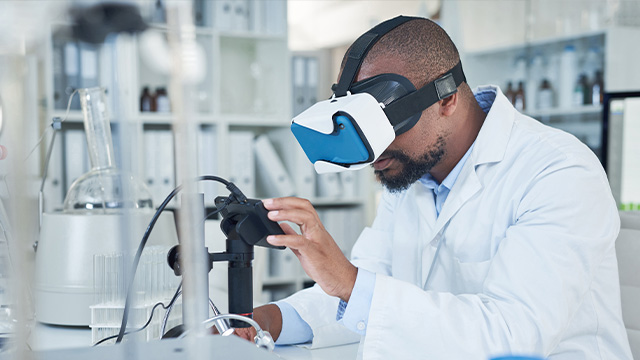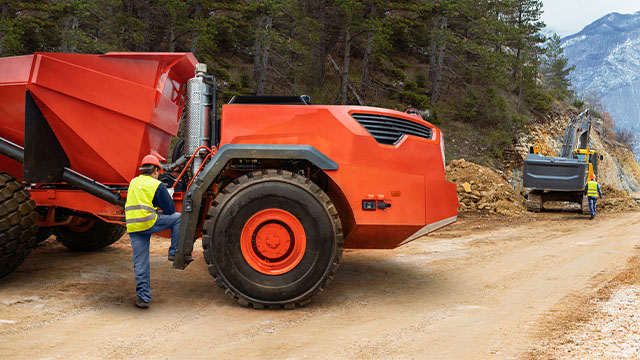The constant evolution of technology and the changing dynamics of work environments necessitate a keen eye on safety innovations. The year 2023 has proven to be a milestone in, with many advancements revolutionising health and safety practices. This blog offers a comprehensive year-in-review of the standout workplace safety innovations and highlights in from 2023.

Safety Innovations and Highlights of 2023
1. Australian Work Health and Safety Strategy 2023-2033
One of the biggest highlights 2023 was the launch of Australia's new Work Health and Safety Strategy for the next decade. The Strategy lays out a national vision for Workplace Health and Safety (WHS) to ensure safe and healthy work for everyone. The Strategy establishes a central objective, supplemented by national targets, and details the enablers, actions, and systemic changes needed to realise this objective over the upcoming decade.
The national targets of this Strategy are as follows.
- A reduction in the number of worker fatalities caused by traumatic injuries of at least 30%
- A decrease in the rate of serious claims resulting in one or more weeks off work
- A reduction in the frequency rate of permanent impairment by 15%
- Workers' overall work-related injury or illness incidence was below 3.5%
- By 2033, there will be no reported instances of accelerated silicosis
- Increase the awareness of PCBUs about their duty to protect workers from exposure to hazardous substances
- Build the capability of PCBUs, regulators, and workers to comply with their duty to manage psychosocial hazards at work
2. Advancements in Wearable Devices
Wearable technology has expanded into the realm of safety in a big way. In 2023, there was a considerable increase in the use of wearable devices that monitor workers' vital signs and provide real-time data on their well-being. These smart devices can detect early signs of fatigue, dehydration, and other potential health hazards, allowing for intervention before it becomes severe.
Some examples of wearable devices used in WHS include:
- Smart hard hats with sensors can detect high temperatures and alert workers to take a break
- Wearable exoskeletons that support heavy lifting and reduce the risk of musculoskeletal injuries
- Safety vests that are equipped with GPS tracking, which helps locate workers in case of an emergency
3. Focus on Mental Health and Well-being
The year 2023 saw a significant focus on mental health and well-being in the workplace. Companies are investing in programs to support their employees' mental and emotional health, recognising its impact on overall health. This includes offering access to mental health resources, providing stress management training, and implementing policies prioritising work-life balance. Here are ways employers can promote mental health in the workplace:
- Offer flexible work arrangements
- Encourage open communication and create a supportive work environment
- Offer valuable resources for managing stress and accessing mental health support
4. Implementation of AI and ML Tools
Artificial intelligence and machine learning transform OHS practices by automating and streamlining processes. AI-powered predictive analytics identify potential hazards and proactively prevent accidents, improving workplace safety. Companies also leverage artificial intelligence algorithms to analyse data and detect patterns that can improve safety procedures.
Examples of AI and ML tools used in the workplace include:
- Smart cameras that can monitor workers' movements and identify potential safety hazards
- Predictive maintenance software using machine learning to schedule maintenance tasks
- Chatbots that assist with conducting safety checks and reporting incidents
5. Immersive Technologies
Virtual reality (VR) and augmented reality (AR) are transforming safety training and onsite inspections. These technologies provide a realistic learning experience for workers, allowing them to practise safety measures in a simulated environment. They also enable remote inspections, reducing the risk of accidents on the job site.
Here are scenarios where VR and AR are used:
- Training workers on operating heavy machinery and equipment safely
- Providing virtual site tours for safety inspections and audits
- Conducting emergency response drills in a simulated environment
6. Sustainability and Climate Action
Environmental sustainability took centre stage in 2023. Organisations focus on reducing their carbon footprint and proactively addressing climate change. This includes setting ambitious sustainability goals, investing in renewable energy, and adopting eco-friendly practices. Bunker companies and other industries are under increasing pressure to meet strict Health and Safety standards to protect their workers and the environment.
All UN Member States adopted the Sustainable Development Goals (SDGs) in 2015 as part of the 2030 Agenda for Sustainable Development. These 17 interconnected goals cover economic growth, social inclusion, and environmental protection, which include:
- Industry, Innovation, and Infrastructure
- Reduced Inequalities
- Responsible Consumption and Production
7. Adoption of Drones and Advanced Alarm Systems
Companies are increasingly using drones to inspect hazardous situations and implementing advanced alarm systems to reduce the risk of workplace accidents. These technologies provide real-time data and alerts, allowing immediate responses in emergencies. Here are the uses of drones in specific industries:
- Inspecting pipelines and other remote infrastructure
- Monitoring confined spaces and hard-to-reach areas for potential hazards
- Conducting aerial surveys to identify safety risks in construction sites or oil rigs
8. Remote Work and Digital Safety Solutions
The COVID-19 pandemic accelerated the trend of remote work, making it a permanent part of many organisations' operations. This shift to a virtual workplace has brought about new worker safety challenges and prompted companies to adopt digital solutions for remote workers. Some examples include:
- Virtual safety training and inductions for remote employees
- Use of cloud-based safety management systems to track and manage safety incidents remotely
- Implement secure digital communication tools for workers to report hazards or seek assistance
9. Workplace Safety Reporting Software
Like the previous point, workplace safety reporting software has become crucial in the WHS landscape. The rise of cloud and application programming interface (API) development has led to a boom in web-based software and mobile applications, helping organisations consolidate safety data under one umbrella. These technologies also provide real-time reporting, enabling quick identification and rectification of potential hazards. Some features of workplace safety reporting software may include:
- Incident management and investigation tools
- Risk assessment and hazard identification capabilities
- Customisable forms for recording incidents, near misses, and other safety concerns
10. Advancement in Transportation
New developments in transportation, such as autonomous vehicles, are creating new safety challenges and opportunities. Companies must adapt their safe work practices to include these advancements and ensure the safety of workers operating or working near these vehicles. Some key areas where transportation is advancing and impacting workers health and safety include:
- Autonomous vehicles in mining, construction, and warehousing operations
- Drones are used for delivering goods and transporting materials in hazardous environments
- Development of safety protocols and training for workers interacting with autonomous vehicles

Why You Need to Know These
Understanding these safety innovations and highlights is crucial for any business or individual involved in WHS, as they provide:
Compliance and Transparency
Keeping up with the latest safety innovations, digital technologies, and trends is crucial for organisations to remain compliant and transparent. When safety practices are up-to-date and transparent, they build trust with stakeholders and demonstrate a commitment to creating safe work environments.
Efficiency and Cost Savings
Implementing new technologies and processes can lead to improved efficiency and cost savings. For example, predictive maintenance software can help identify potential equipment failures before they occur, reducing downtime and repair costs. Virtual reality (VR) training programs can significantly reduce costs by eliminating the necessity for physical training facilities and minimising travel expenses. Additionally, they provide a cost-effective alternative while maintaining the same level of effectiveness as traditional training methods.
Continuous Improvement
Ignoring safety innovations can put your workplace at risk. Understanding and adopting these advancements can help organisations continuously improve their safety practices because they provide data-driven insights and real-time monitoring capabilities.
Competitive Advantage
The health and safety field is evolving, as are stakeholders' expectations. Companies that embrace and implement these safety trends effectively have a competitive advantage, attracting potential clients, employees, and investors who value safety and sustainability.
Supply Chain Resilience
Businesses can strengthen their supply chain resilience by adopting innovations. Incorporating sustainability initiatives, implementing advanced alarm systems, and utilising digital and safety monitoring solutions can minimise risks and disruptions in supply chains. This also ensures compliance with customer requirements and government regulations.
Increased Collaboration and Partnerships
When your workplace implements new technologies, safety processes and practices. It opens doors for potential partnerships. Collaborating with other organisations or suppliers on innovative workplace solutions can lead to knowledge sharing and improved safety outcomes across industries.
How Can You Stay Updated
Your workplace can stay updated on the latest safety trends and innovations through various resources, including:
- Integrated WHS Management Systems: These solutions can help consolidate and track safety data, providing insights into potential problem areas and best practices.
- Industry Events and Conferences: Attending industry events and conferences can provide opportunities to learn about the latest advancements and network with other professionals.
- Industry Publications: Reading industry publications, such as journals or magazines, can help you stay informed on the latest safety trends and innovations.
- Networking: Joining industry associations or online forums can help you connect with professionals and stay updated on the latest developments.
- Training and Education: Participating in training programs, webinars, or conferences can provide valuable insights into new technologies and best practices.
We Have What You Need!
SafetyDocs by SafetyCulture understands the importance of staying updated on health and safety trends and innovations. That's why we offer a wide range of safety documents, including management systems, training documents, risk assessments, and checklists to help your business stay ahead in the ever-changing landscape of workplace safety.
Our documents are constantly updated and customisable to suit your industry and specific needs. With SafetyDocs, you can ensure compliance, improve efficiency, and promote a workplace safety culture.
Browse these resources today and stay afloat with advancements in your workplace for a safer and more sustainable future.
Contact us today to learn how SafetyDocs can help your business stay updated and compliant with health and safety practices.
Our team of experts is dedicated to providing accurate and informative content. Craig Cruickshank, our senior HSEQ advisor at SafetyDocs by SafetyCulture has reviewed this blog post to ensure the highest level of quality.
Learn more about Craig's work on LinkedIn for more industry insights.
Available for instant download and supplied in fully editable MS Word format for use in your business.
Please note that the above information is provided as a comment only and should not be relied on as professional, legal or financial advice.
Share This Article
